Development of a Current Injection—Type Impedance Measurement System for Monitoring Soil Water Content and Ion Concentration
Abstract
:1. Introduction
2. Principle
2.1. Soil Impedance and Water Content/Ion Concentration
2.2. Measurement Circuits
2.3. Soil Transient Characteristics When Current Is Applied
3. Creation and Evaluation of the Circuit
3.1. Fabrication of Chips
3.2. Checking the Operation of the Circuit
3.3. Checking the Effect of Electric Double Layer Capacitance
4. RC Calculation Algorithm
5. Simulation Experiments
6. Experiments to Measure Water Content and Ion Concentration
6.1. Measurement of Water Contents
6.2. Measurement of Ion Concentrations in Water
6.3. Measurement Results of Ion Concentration in Soil
7. Conclusions
Author Contributions
Funding
Institutional Review Board Statement
Informed Consent Statement
Data Availability Statement
Conflicts of Interest
References
- Topp, G.C.; Davis, J.L.; Annan, A.P. Electromagnetic Determination of Soil Water Content: Measurements in Coaxial Transmission Lines. Water Resour. Res. 1980, 16, 574–582. [Google Scholar] [CrossRef] [Green Version]
- Munoz-Carpena, R. Field Devices for Monitoring Soil Water Content: BUL343/AE266, 7/2004. EDIS 2004, 8, 1–16. [Google Scholar]
- Schwartz, R.C.; Evett, S.R.; Anderson, S.K.; Anderson, D.J. Evaluation of a Direct-Coupled Time-Domain Reflectometry for Determination of Soil Water Content and Bulk Electrical Conductivity. Vadose Zone J. 2016, 15, 1–8. [Google Scholar] [CrossRef]
- Villoro, A.; Latorre, B.; Tormo, J.; Jimenez, J.J.; Lopez, M.V.; Nicolau, J.M.; Vicente, J.; Gracia, R.; Moret-Fernandez, D. A TDR wireless device for volumetric water content sensing. Comput. Electron. Agric. 2021, 181, 105939. [Google Scholar] [CrossRef]
- Dalton, F.N.; van Genuchten, M.T. The time—Domain reflectometry method for measuring soil water content and salinity. Geoderma 1986, 38, 237–250. [Google Scholar] [CrossRef]
- Malik, S.; Kishore, K.; Islam, T.; Zargar, H.; Akbar, S.A. A time domain bridge-based impedance measurement technique for wide—range lossy capacitive sensors. Sens. Actuators A Phys. 2015, 234, 248–262. [Google Scholar] [CrossRef]
- Eller, H.; Denoth, A. A capacitive soil moisture sensor. J. Hydrol. 1996, 185, 137–146. [Google Scholar] [CrossRef]
- Robinson, D.A.; Kelleners, T.J.; Cooper, J.D.; Gardner, C.M.K.; Wilson, P.; Lebron, I.; Logsdon, S. Evaluation of Capacitance Probe Frequency Response Model Accounting for Bulk Electrical Conductivity. Vadose Zone J. 2005, 4, 992–1003. [Google Scholar] [CrossRef]
- Kelleners, T.J.; Soppe, R.W.O.; Robinson, D.A.; Schaap, M.; Ayars, J.E.; Skaggs, T.H. Calibration of Capacitance Probe Sensors using Electric Circuit Theory. Soil Sci. Soc. Am. J. 2004, 68, 430–439. [Google Scholar] [CrossRef]
- Jaworek, A.; Krupa, A.; Trela, M. Capacitance sensor for void fraction measurement in water/stream flows. Flow Meas. Instrum. 2004, 15, 317–324. [Google Scholar] [CrossRef]
- Rusu, C.; Kroser, A.; Johansson, C.; Ahrentorp, F.; Pettersson, T.; Rosevall, J.; Ilver, D.; Terzaghi, M.; Chiatante, D.; Montagnoli, A. Miniaturized Wireless Water Content and Conductivity Soil Sensor System. Comput. Electron. Agric. 2019, 167, 105076. [Google Scholar] [CrossRef]
- Kojima, Y.; Shigeta, R.; Miyamoto, N.; Shirahama, Y.; Nishioka, K.; Mizoguchi, M.; Kawahara, Y. Low–Cost Soil Moisture Profile Probe Using Thin-Film Capacitors and a Capacitive Touch Sensor. Sensors 2016, 16, 1292. [Google Scholar] [CrossRef] [PubMed]
- Sucre, O.; Casanova, F.; Pohlmeier, A.; Bluemich, B. Low-Field NMR of Water in Model Soils. Open Magn. Reson. J. 2010, 3, 63–68. [Google Scholar] [CrossRef]
- Wu, J.; Guo, P.; Shen, S.; He, Y.; Huang, Z.; Xu, Z. Mini Inside-Out Nuclear Magnetic Resonance Sensor Design for Soil Moisture Measurements. Sensors 2019, 19, 1682. [Google Scholar] [CrossRef] [Green Version]
- Ohkawara, S.; Miura, K.; Hirano, H.; Ota, S.; Futagawa, M. Evaluation of a Hydrogen Signal Detection Method Using a Compact NMR Sensor for the Measurement of Ion Concentrations in Culture Medium. Electron. Commun. Jpn. 2022, e12346. [Google Scholar] [CrossRef]
- Segundo, A.K.R.; Pinto, E.S.; Santos, G.A.; de Barros Monteiro, P.M. Capacitive Impedance Measurement: Dual-Frequency Approach. Sensor 2019, 21, 2149. [Google Scholar] [CrossRef] [Green Version]
- Gaskin, G.J.; Miller, J.D. Measurement of Soil Water Content using a Simplified Impedance Measuring Technique. J. Agric. Eng. Res. 1996, 63, 153–160. [Google Scholar] [CrossRef]
- Available online: https://www.analog.com/media/en/technical-documentation/data-sheets/AD5933.pdf (accessed on 1 April 2022).
- Futagawa, M.; Iwasaki, T.; Noda, T.; Takao, H.; Ishida, M.; Sawada, K. Miniaturization of Electrical Conductivity Sensors for a Multimodal Smart Microchip. Jpn. J. Appl. Phys. 2009, 48, 04C184. [Google Scholar] [CrossRef]
- Futagawa, M.; Iwasaki, T.; Murata, H.; Ishida, M.; Sawada, K. A Miniature Integrated Multimodal Sensor for Measuring pH, EC and Temperature for Precision Agriculture. Sensors 2012, 12, 8338–8354. [Google Scholar] [CrossRef] [Green Version]
- Murata, H.; Futagawa, M.; Kumazaki, T.; Saigusa, M.; Ishida, M.; Sawada, K. Millimeter Scale Sensor Array System for Measuring the Electrical Conductivity Distribution in Soil. Comput. Electron. Agric. 2014, 102, 43–50. [Google Scholar] [CrossRef]
- Futagawa, M.; Ito, T.; Ogasahara, S.; Kusano, K.; Fuwa, Y.; Komatsu, M. Fabrication of an Impedance Sensor with Hydrophilic Property to Monitor Soil Water Content for Slope Failure Prognostics. Sens. Mater. 2021, 33, 4147–4156. [Google Scholar] [CrossRef]
- Futagawa, M.; Ogasahara, S.; Ito, T.; Komatsu, M.; Fuwa, Y.; Hirano, H.; Akita, I.; Kusano, K.; Watanabe, M. Fabrication of a Low Leakage Current Type Impedance Sensor with Shielding Structures to Detect a Low Water Content of Soil for Slope Failure Prognostics. Sens. Actuators A Phys. 2018, 271, 383–388. [Google Scholar] [CrossRef]
- Alharthi, A.; Lange, J. Soil water saturation: Dielectric determination. Water Resour. Res. 1987, 23, 591–595. [Google Scholar] [CrossRef]
- Fedorov, M.V.; Kornyshev, A.A. Towards understanding the structure and capacitance of electrical double layer in ionic liquids. Electrochim. Acta 2008, 53, 6835–6840. [Google Scholar] [CrossRef]

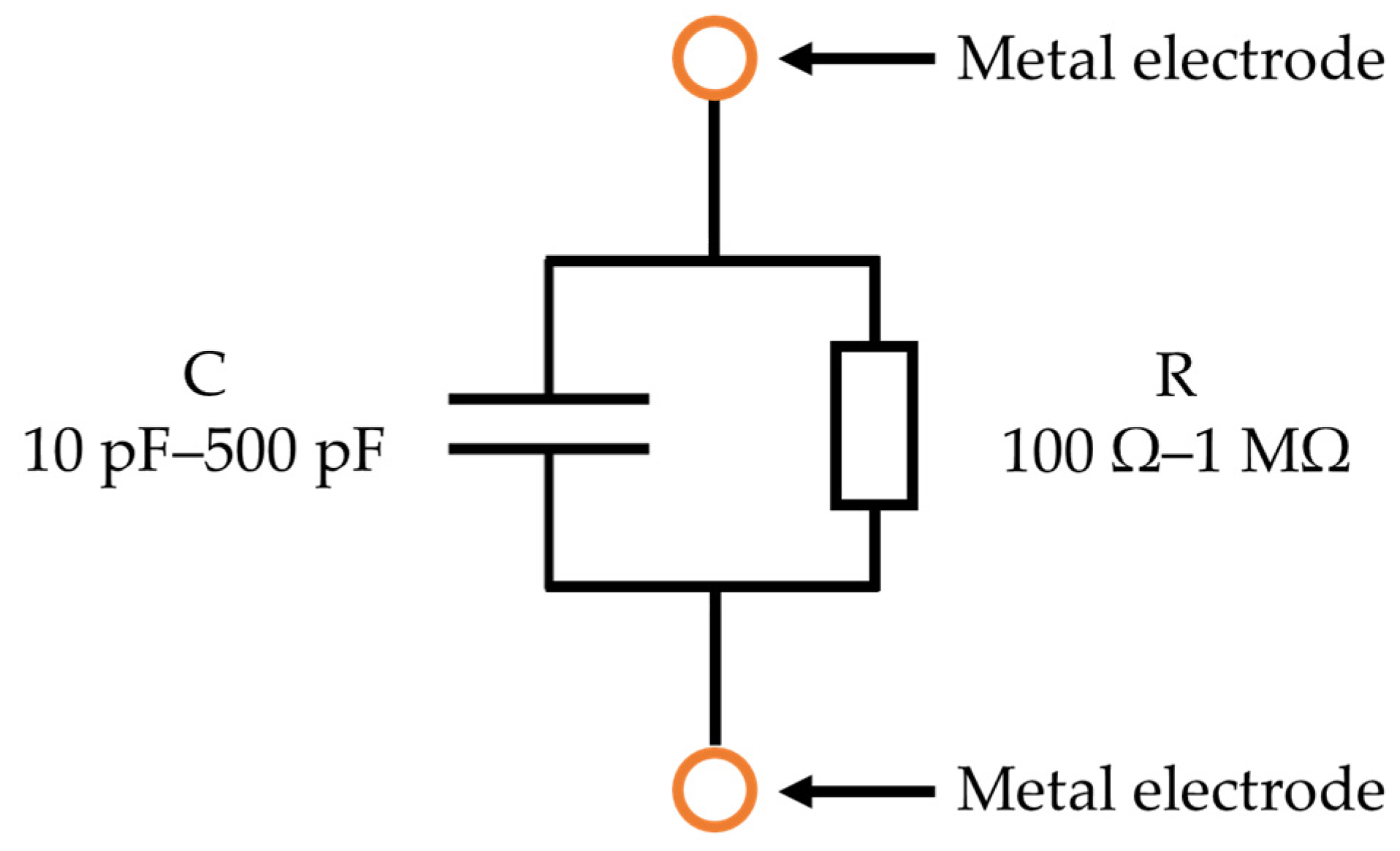
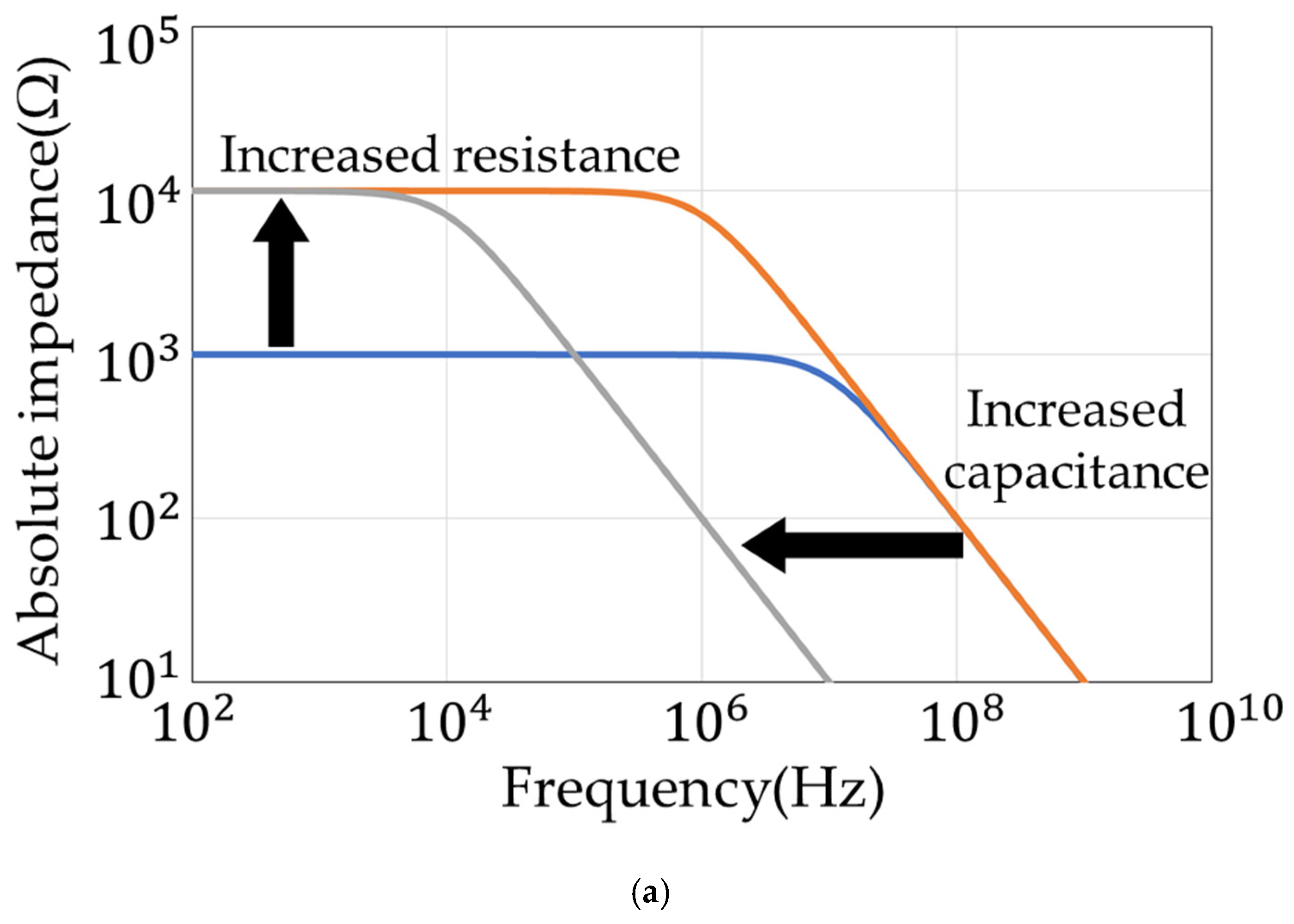

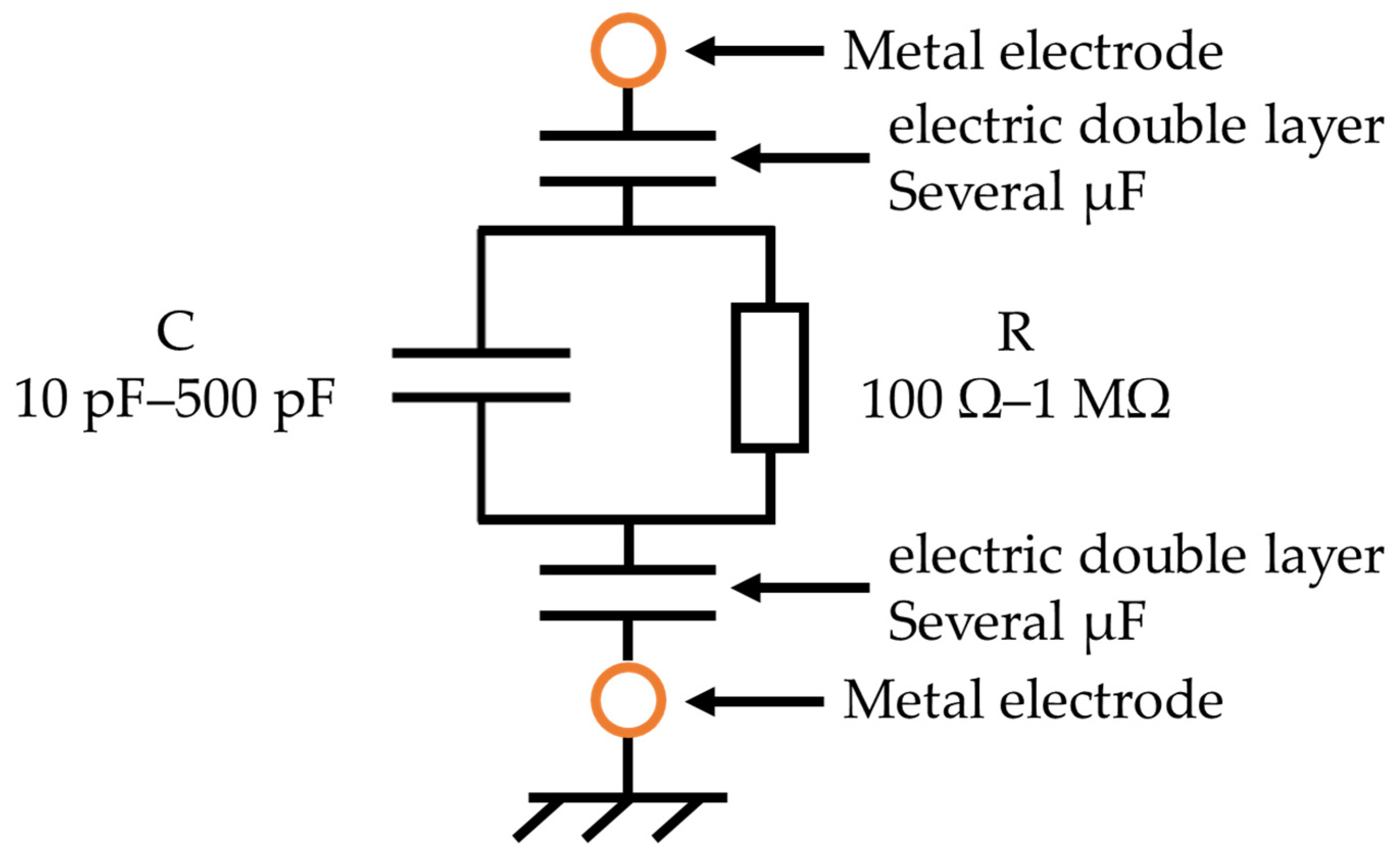




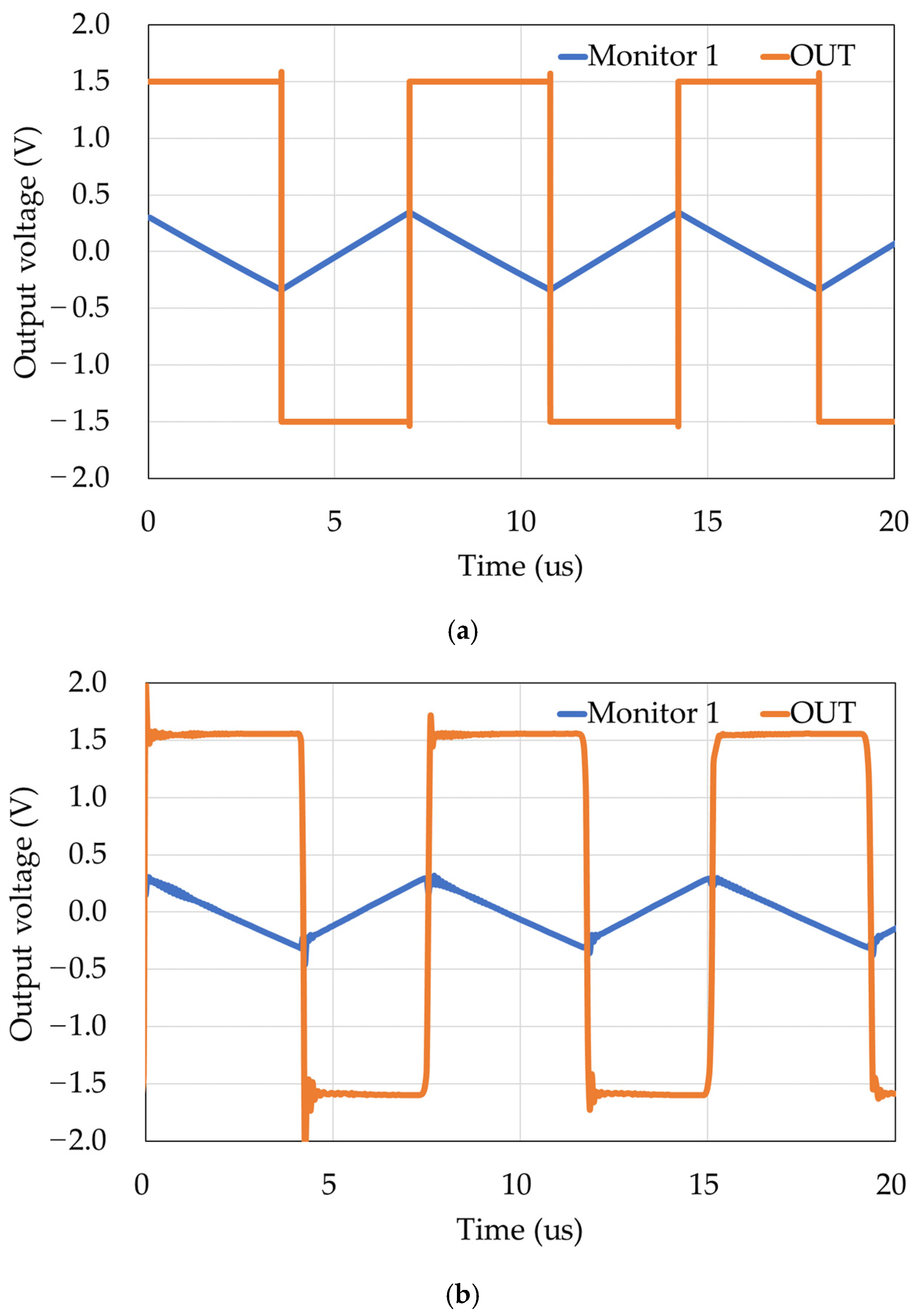
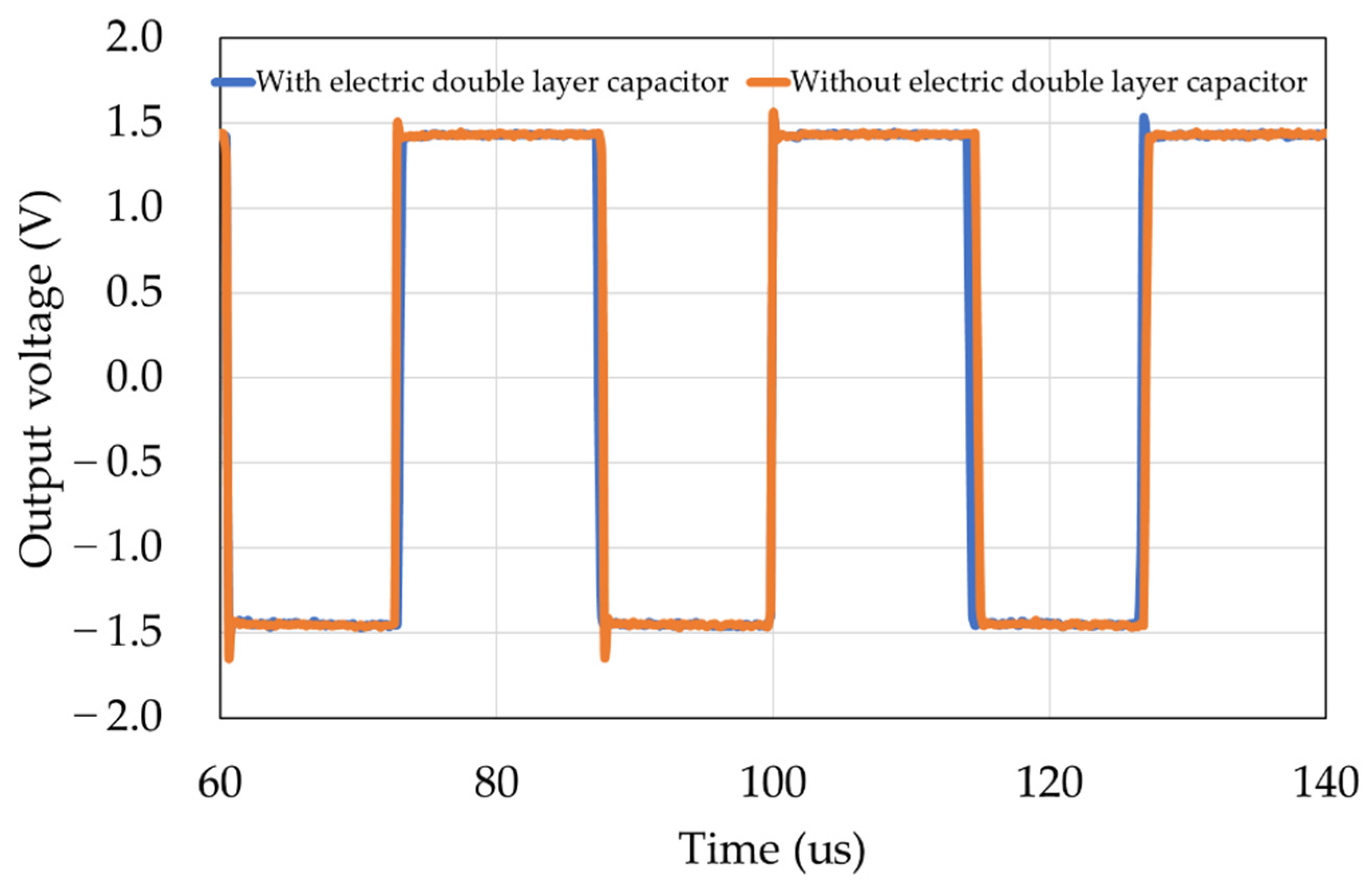

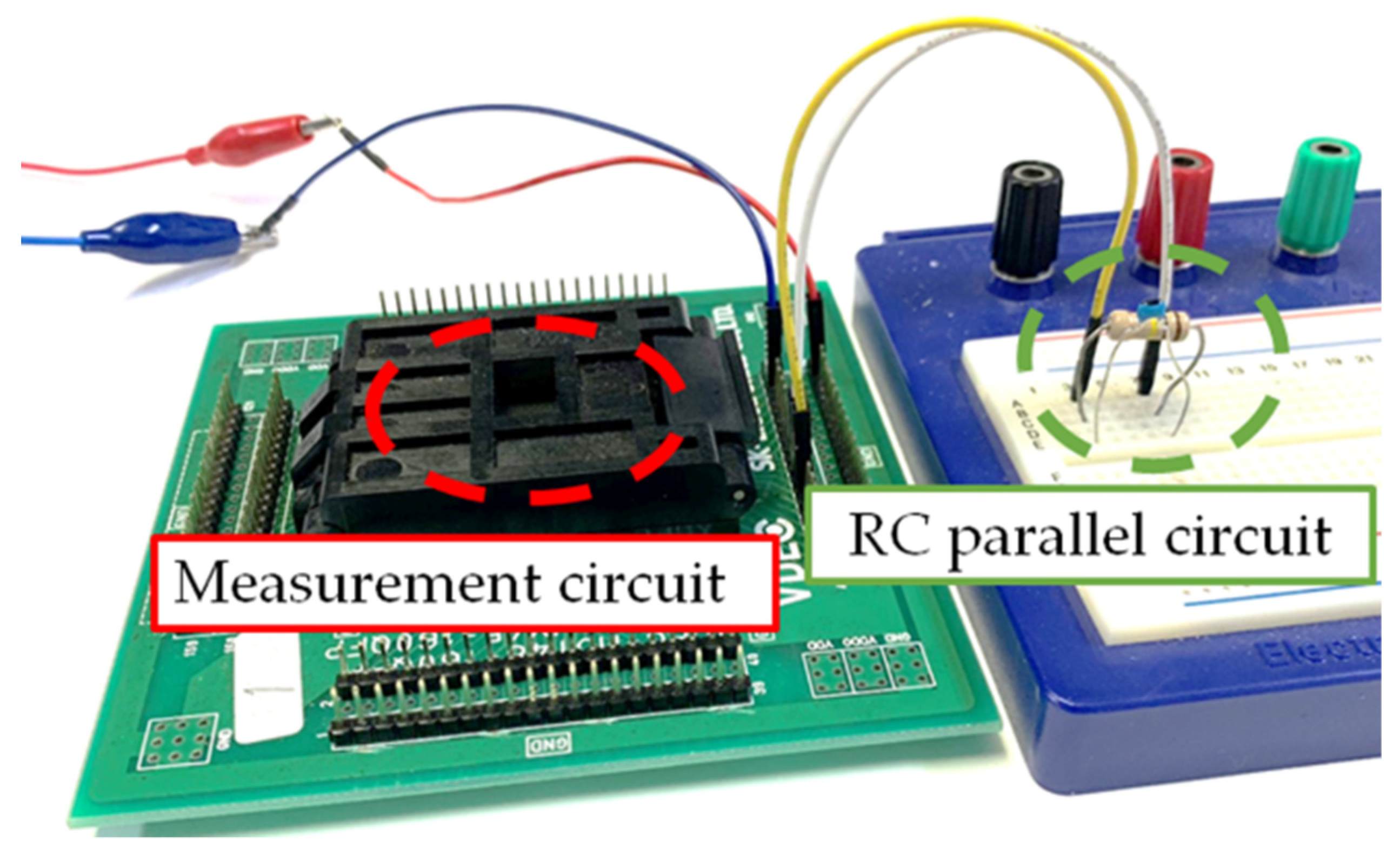

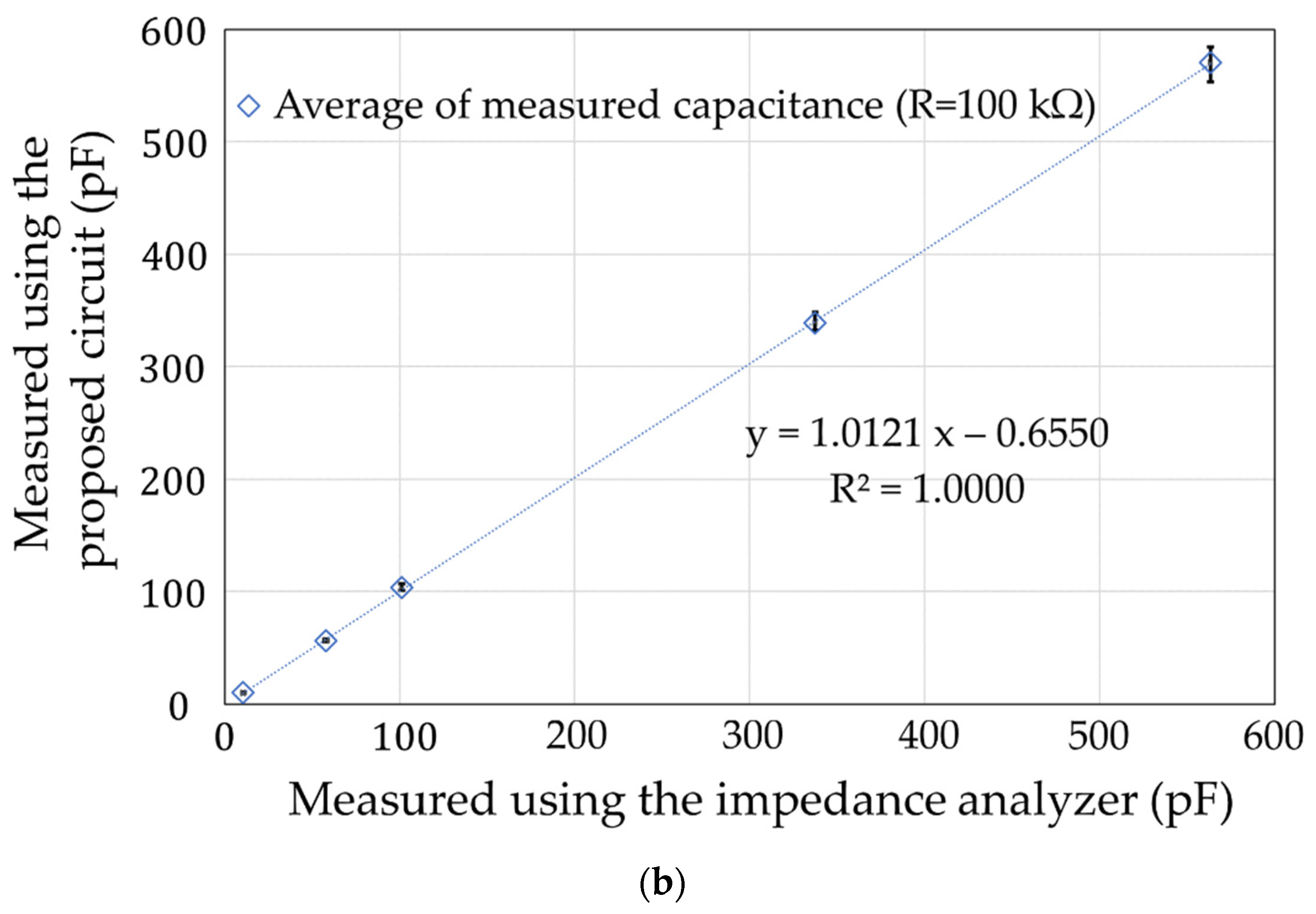
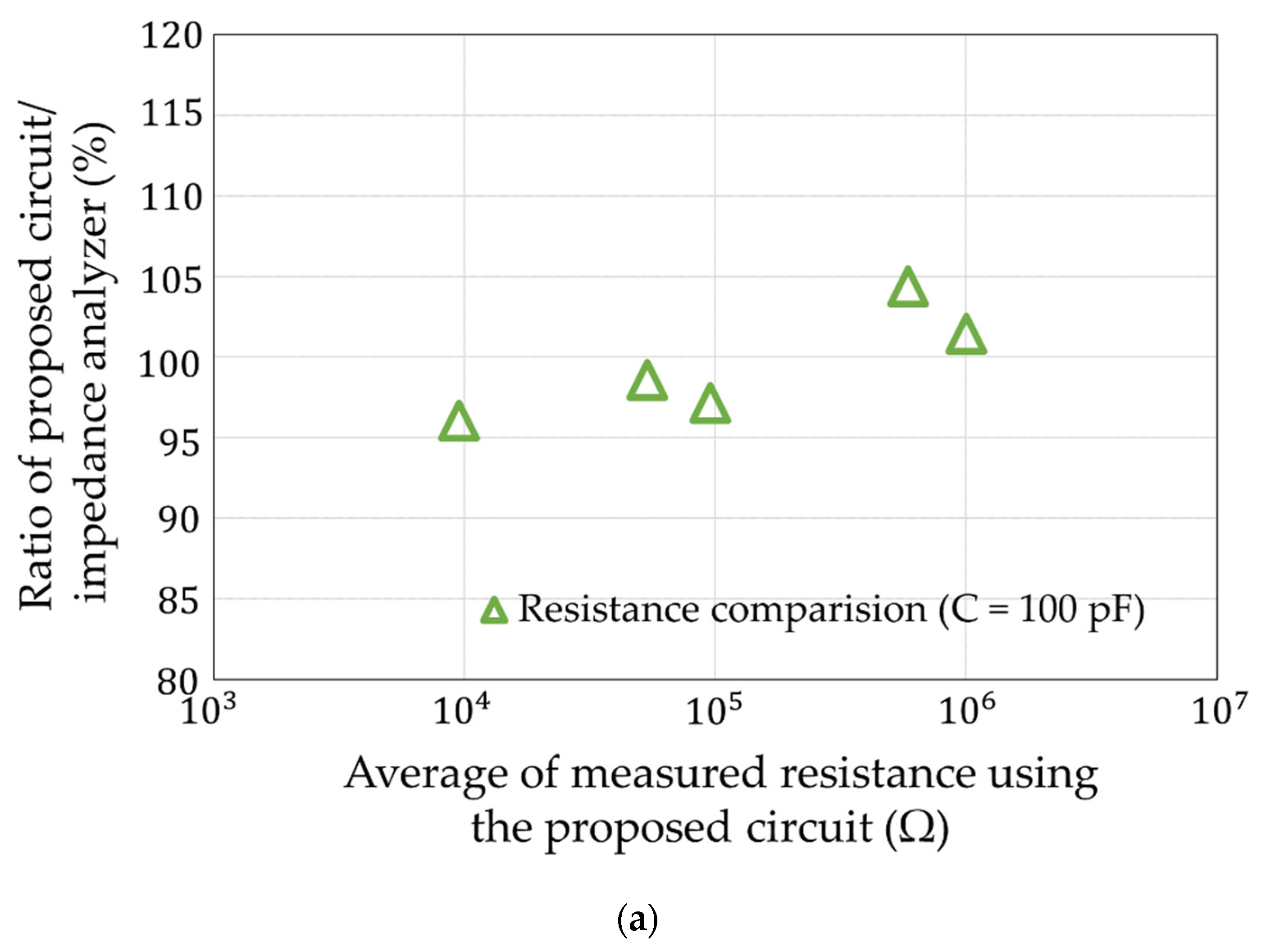

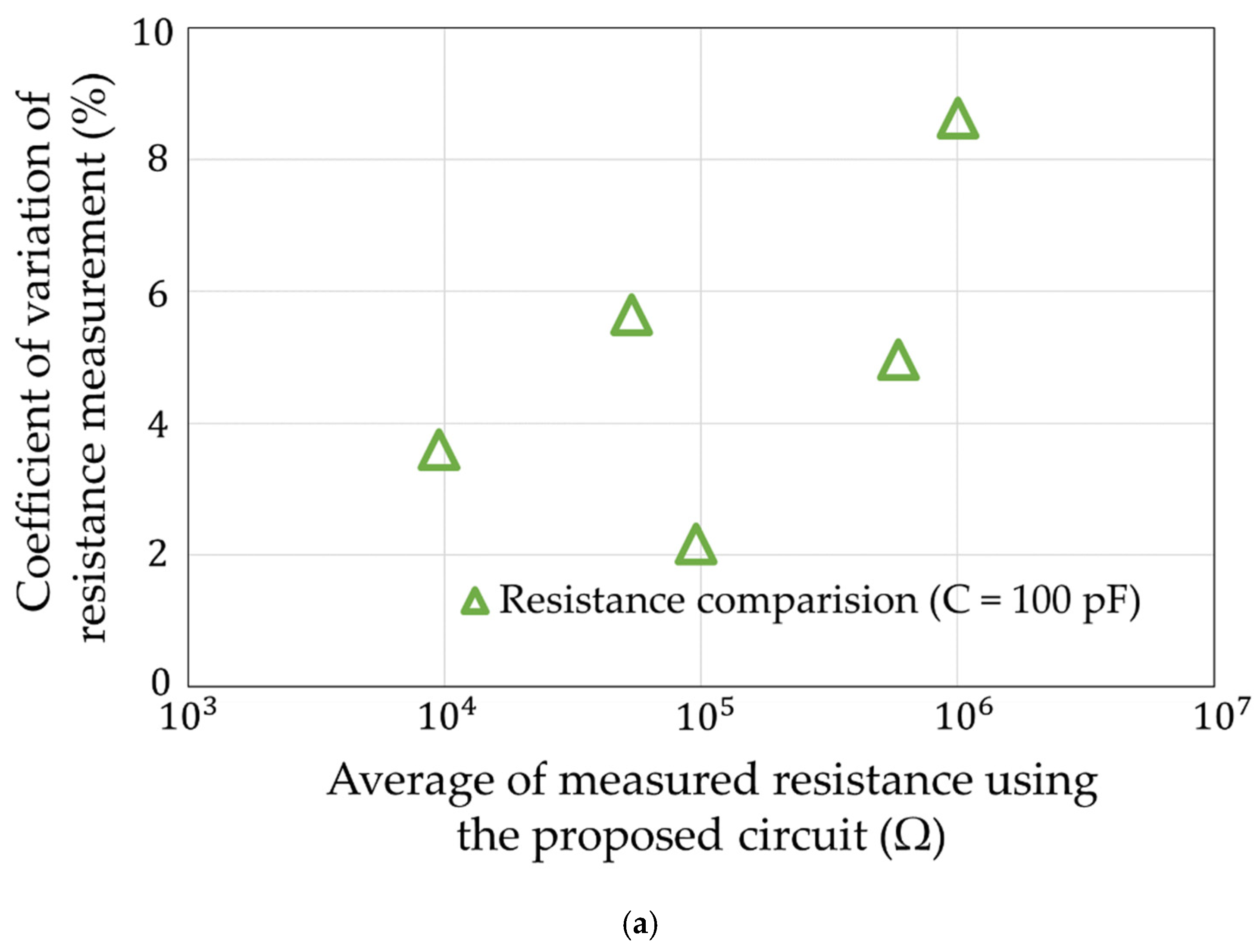
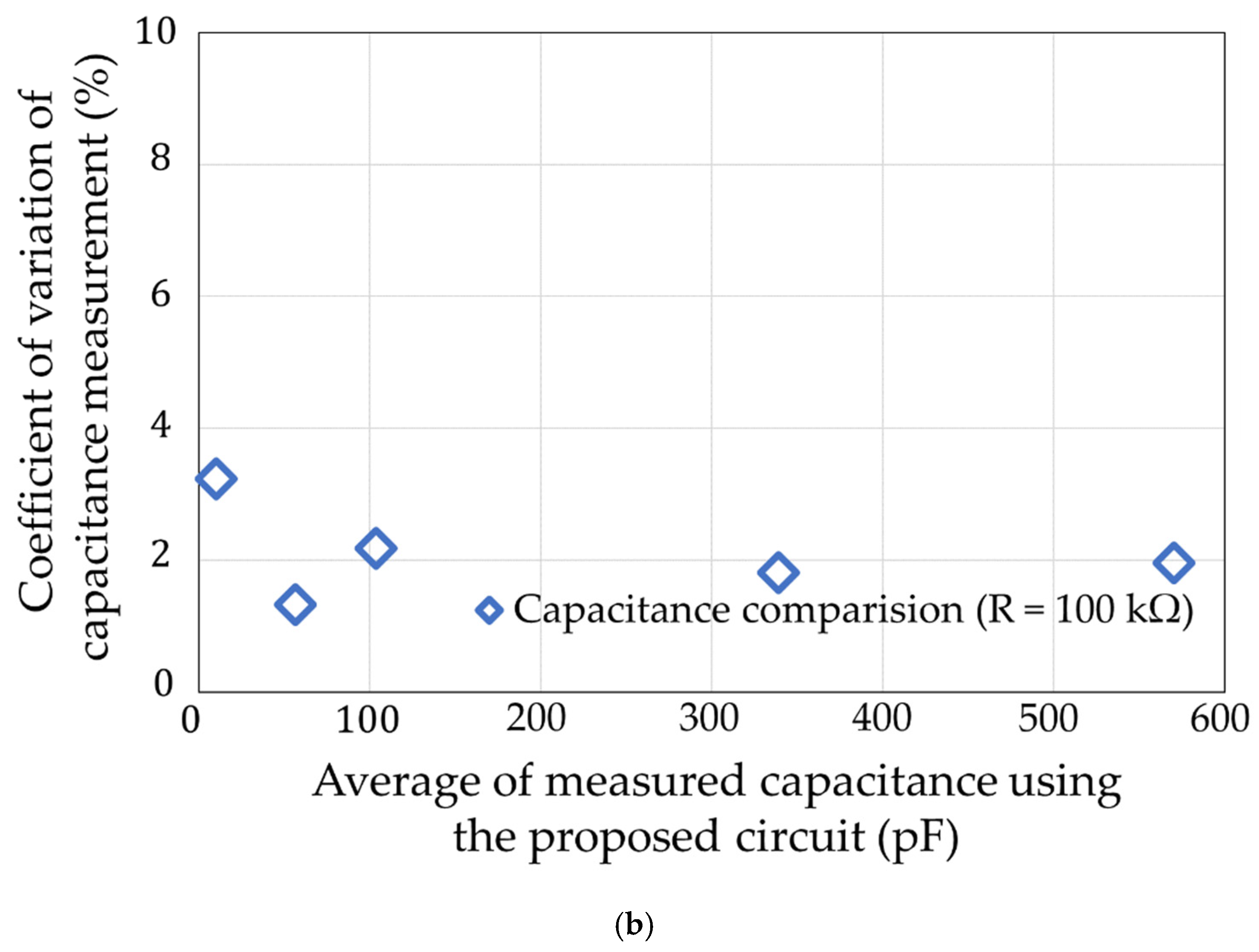
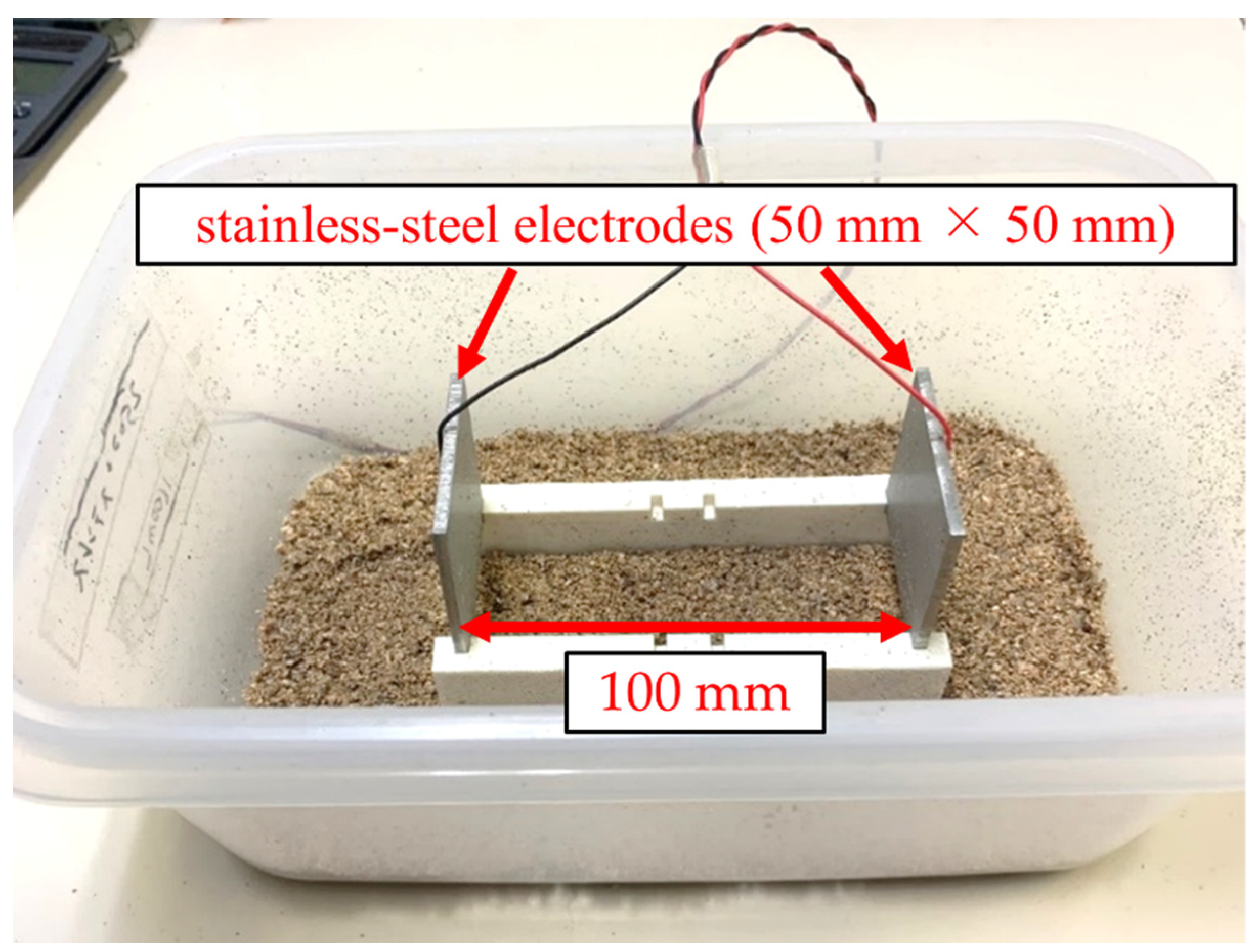
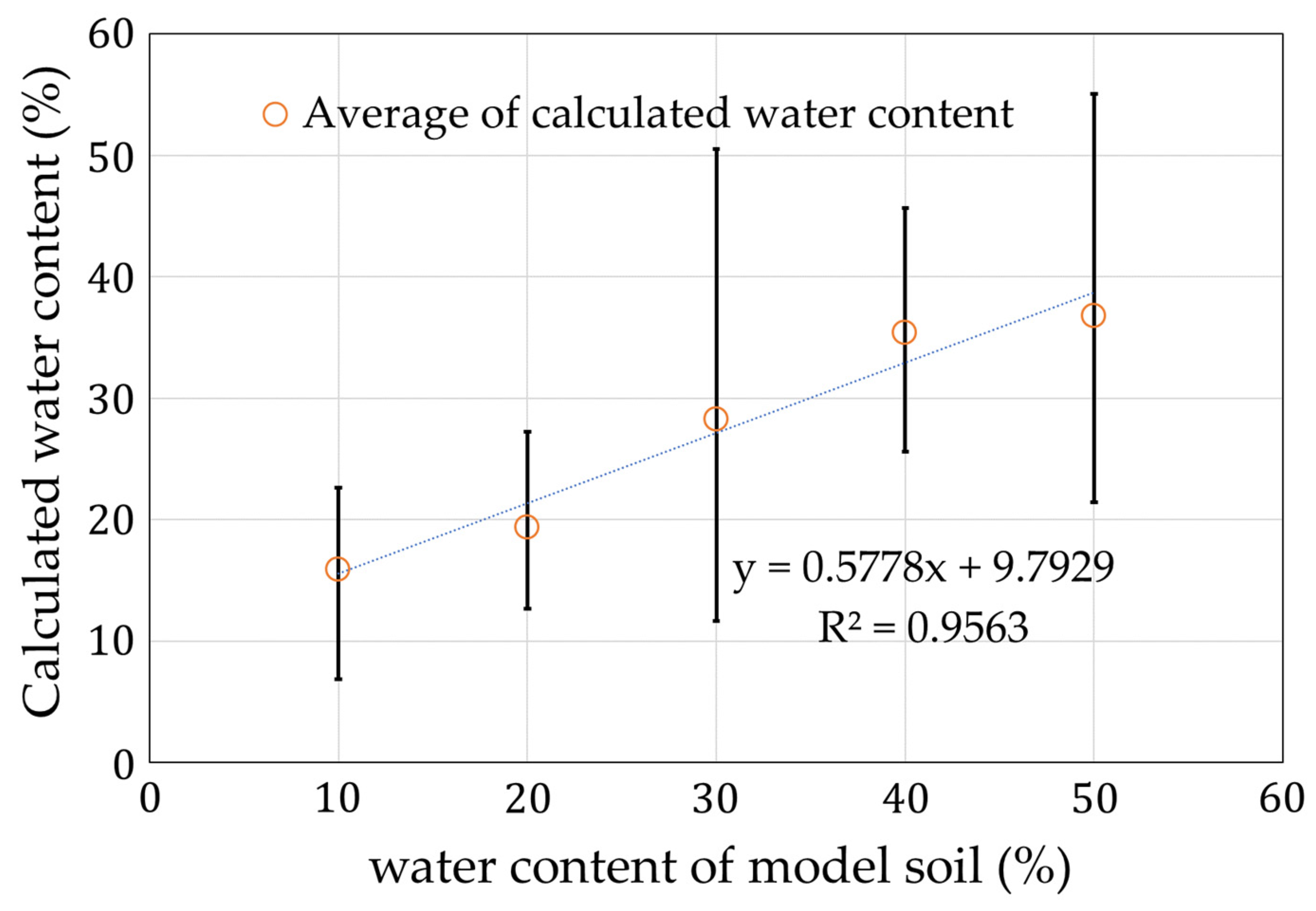
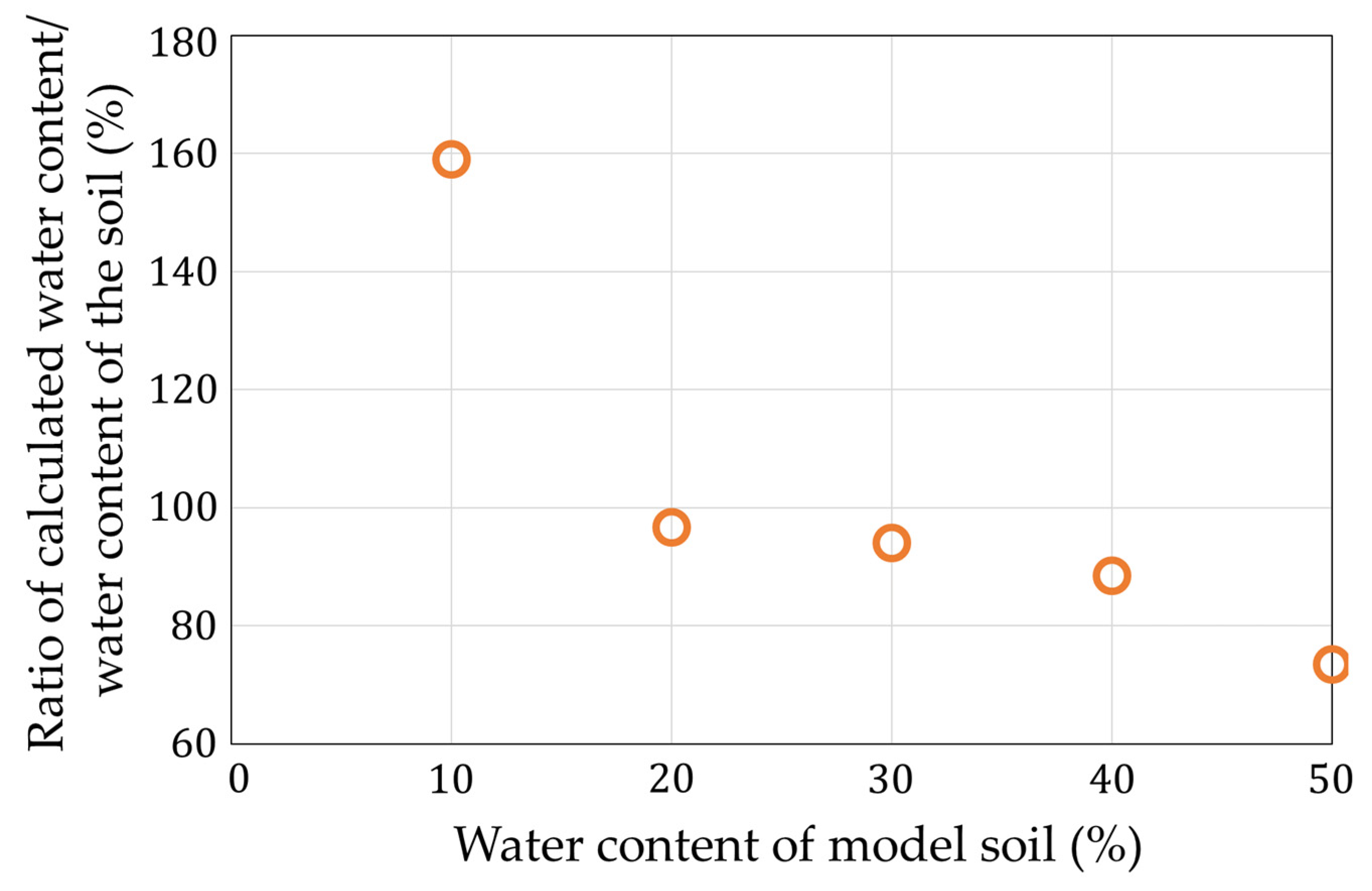
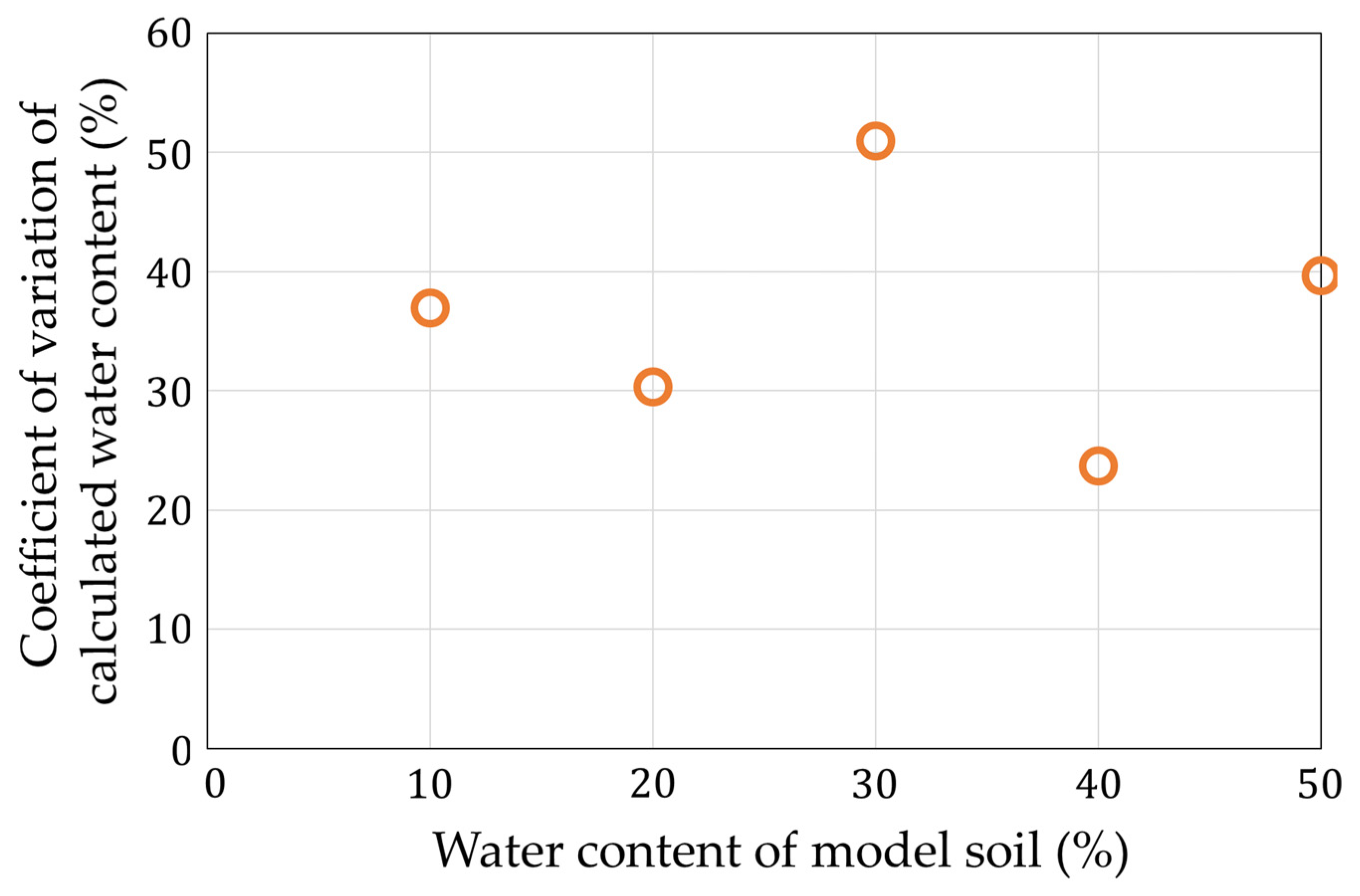
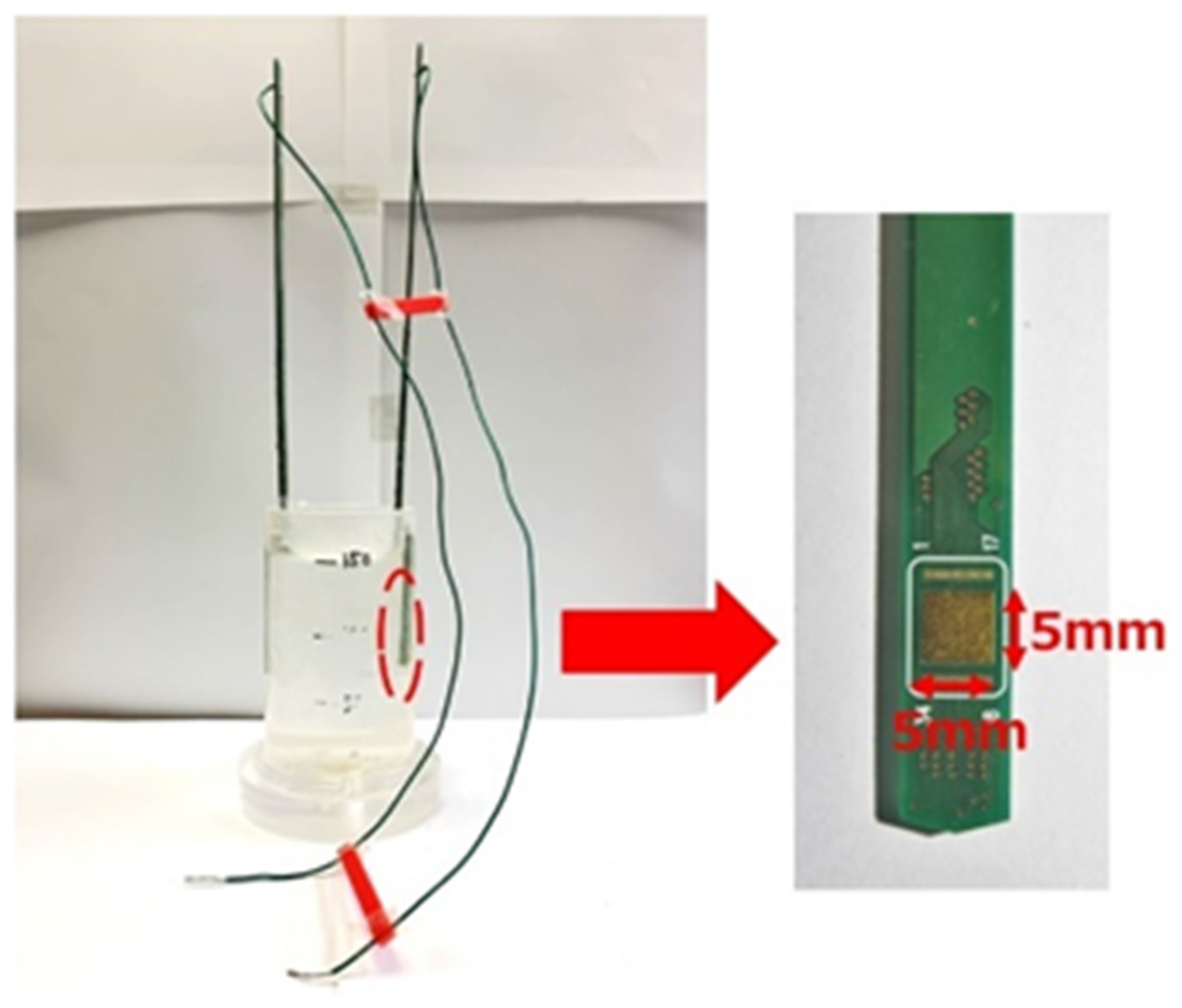
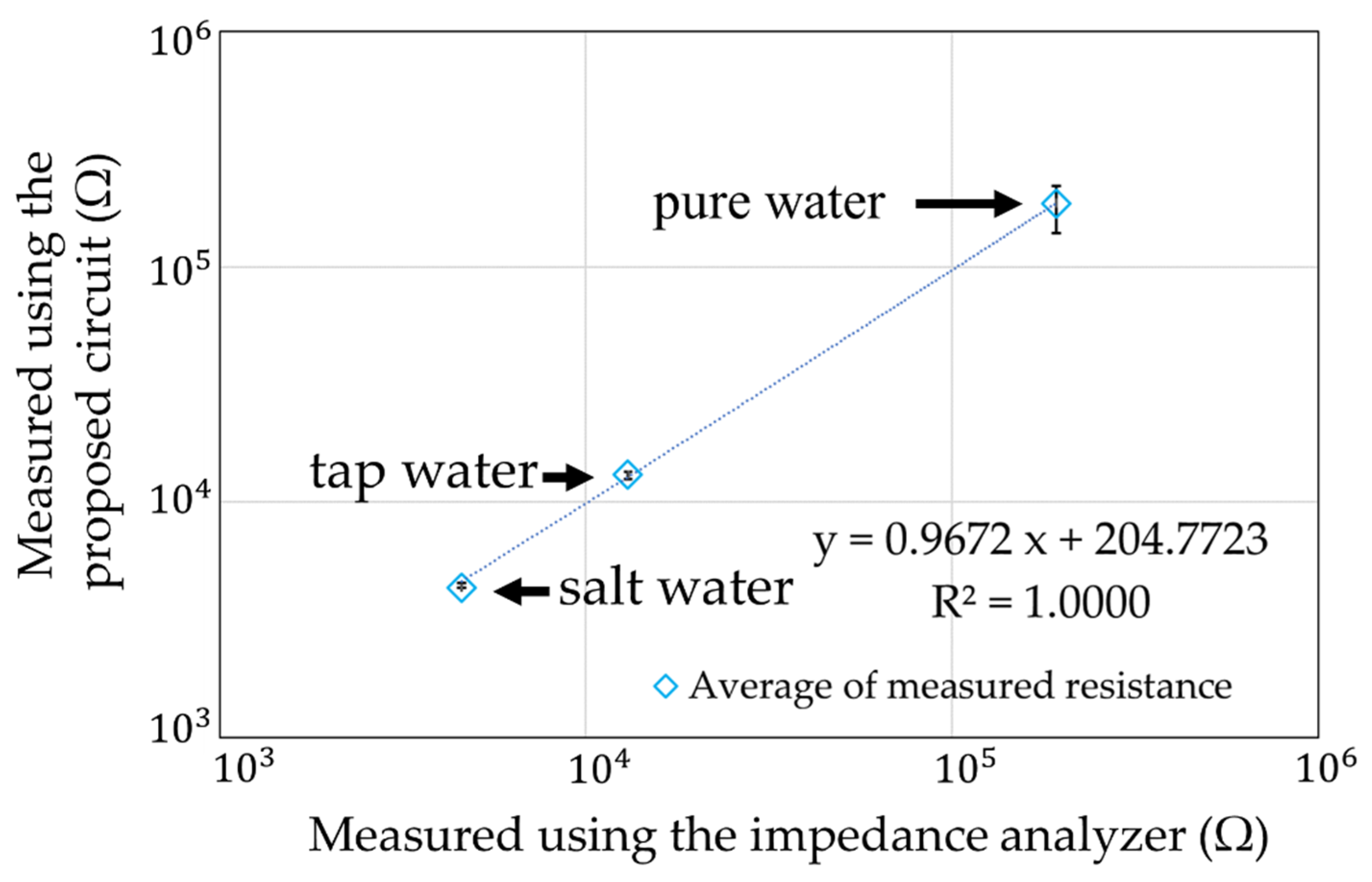
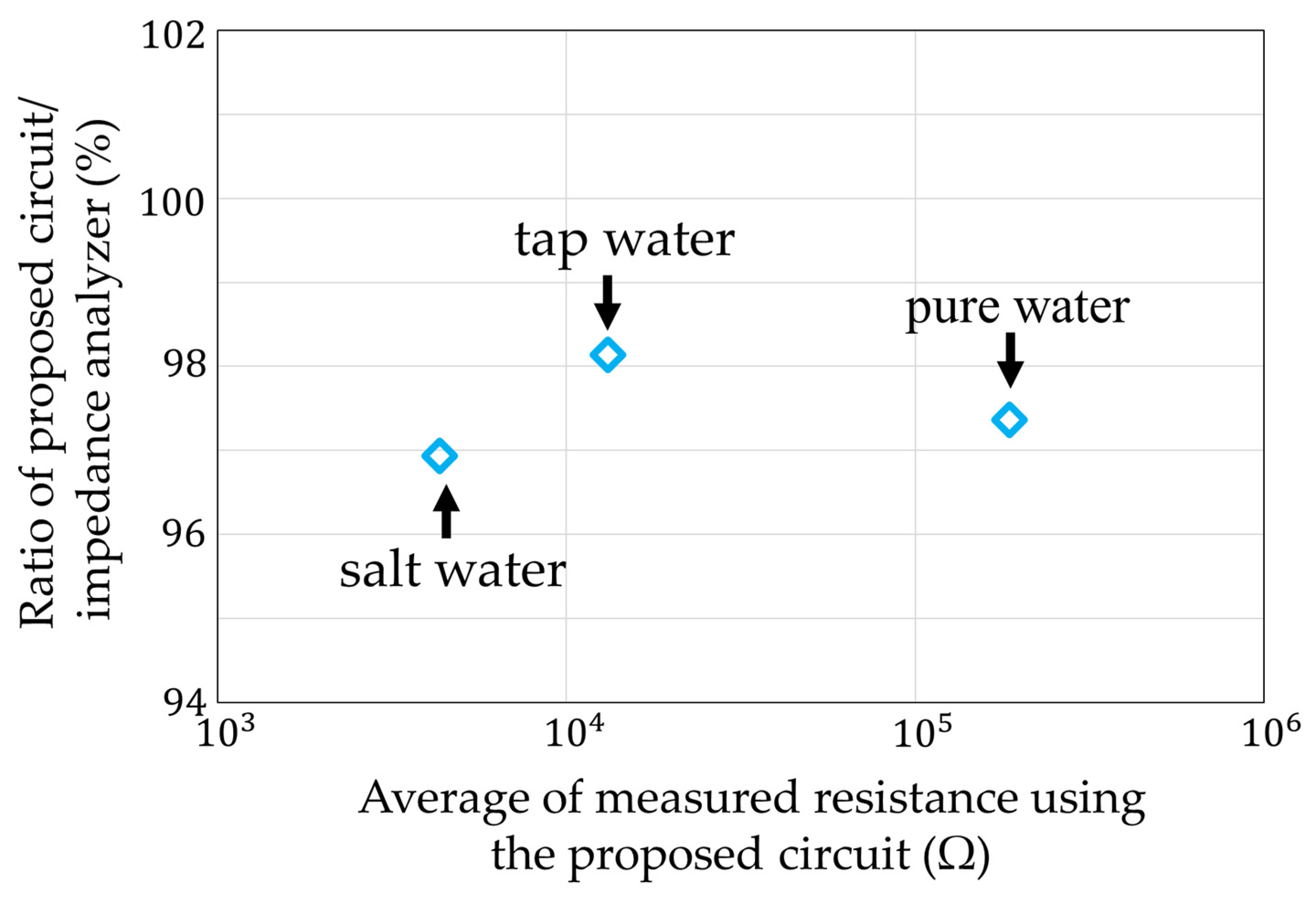

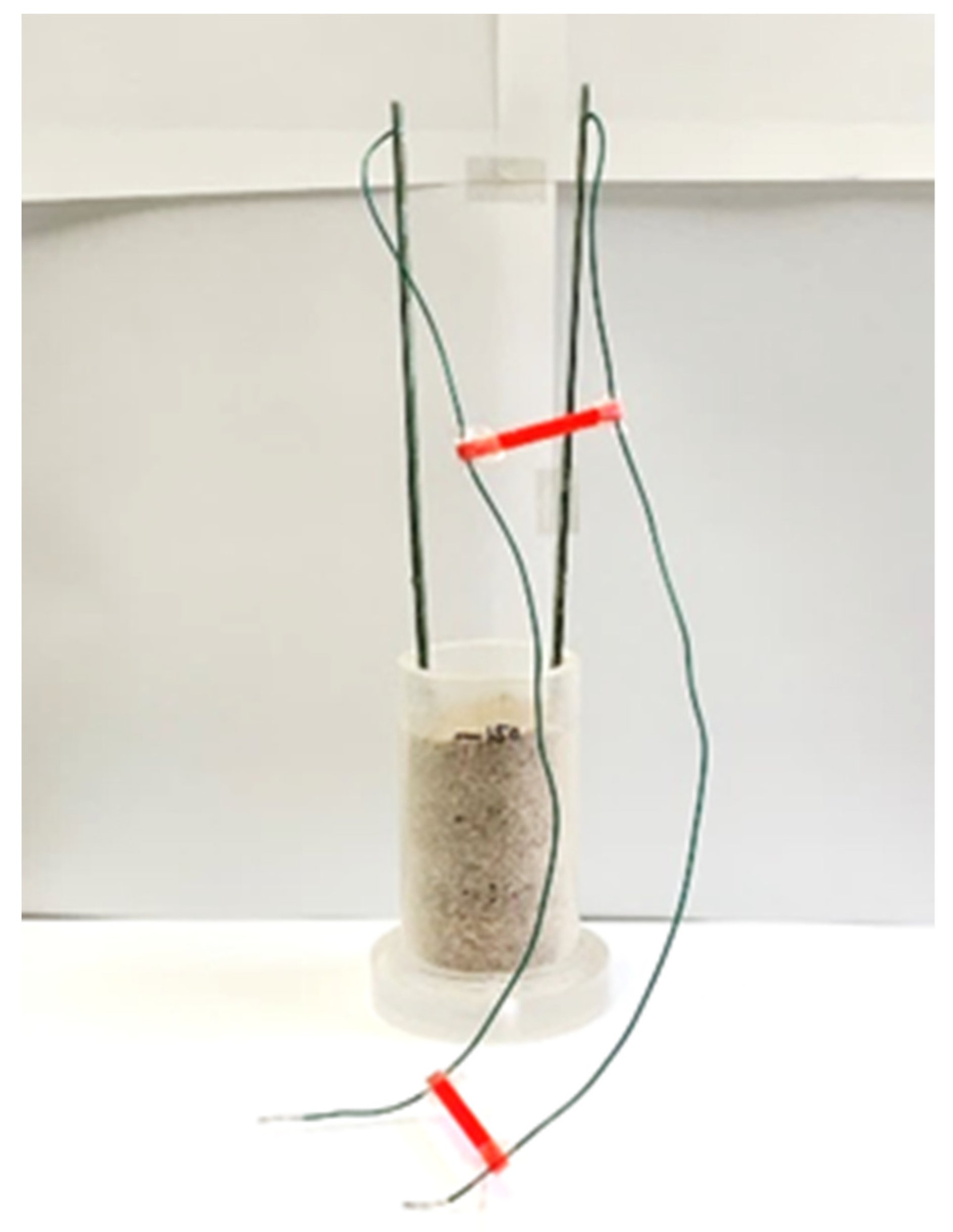

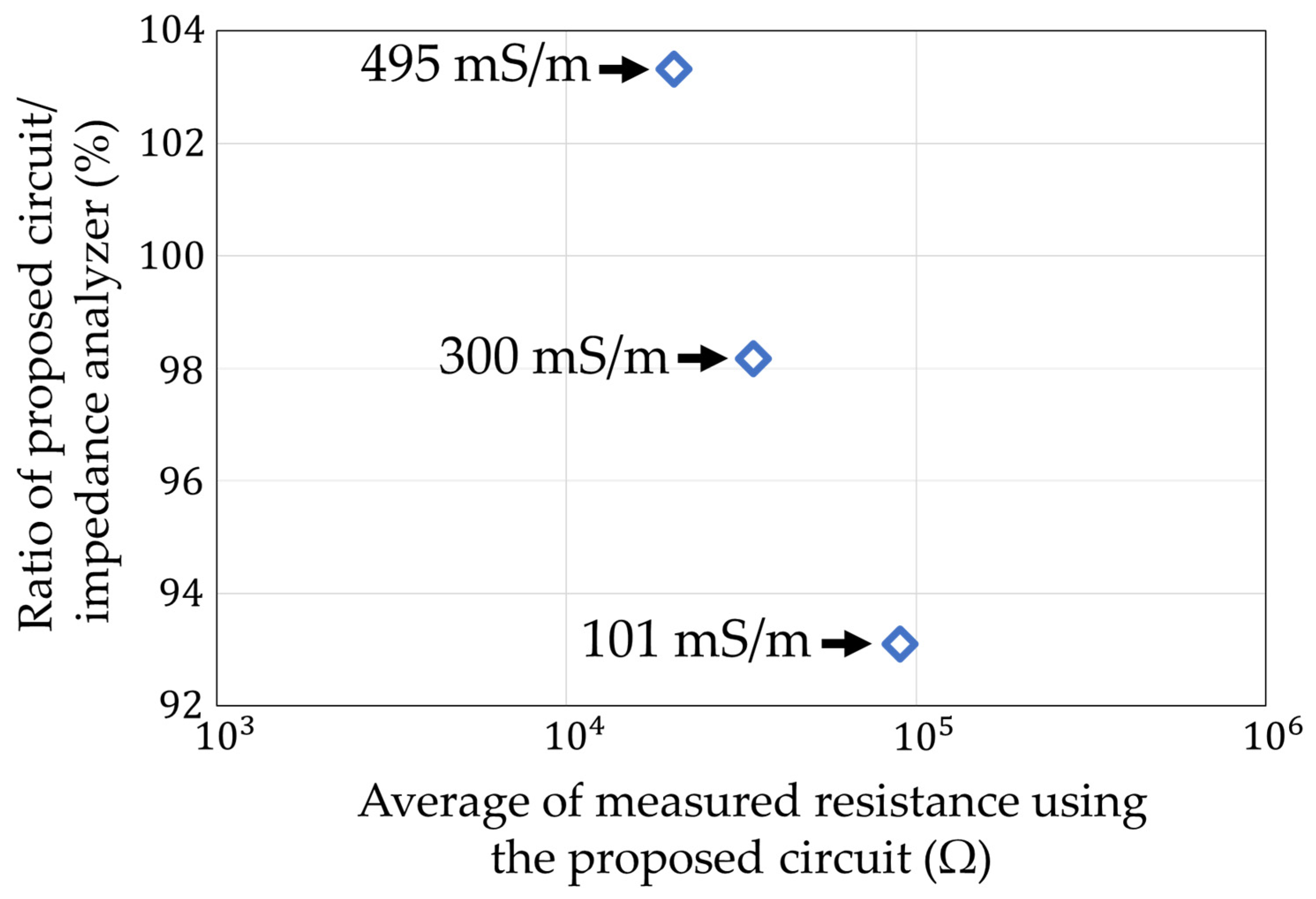

| Measurement Method | Measurement Principle | Output | Noise Resistance | System Configuration | Accuracy |
|---|---|---|---|---|---|
| TDR | Transmission time | Reflected wave | ○ | Complex | ±6% |
| AC voltage applied type | Impedance (absolute, phase) | Sine wave | × | Complex | ±1.6% |
| DC current applied type (proposed circuit) | Voltage transient characteristics | Square wave | ○ | Simple | ±5% |
Publisher’s Note: MDPI stays neutral with regard to jurisdictional claims in published maps and institutional affiliations. |
© 2022 by the authors. Licensee MDPI, Basel, Switzerland. This article is an open access article distributed under the terms and conditions of the Creative Commons Attribution (CC BY) license (https://creativecommons.org/licenses/by/4.0/).
Share and Cite
Shigemasu, R.; Teraoka, Y.; Ota, S.; Hirano, H.; Yasutomi, K.; Kawahito, S.; Futagawa, M. Development of a Current Injection—Type Impedance Measurement System for Monitoring Soil Water Content and Ion Concentration. Sensors 2022, 22, 3509. https://doi.org/10.3390/s22093509
Shigemasu R, Teraoka Y, Ota S, Hirano H, Yasutomi K, Kawahito S, Futagawa M. Development of a Current Injection—Type Impedance Measurement System for Monitoring Soil Water Content and Ion Concentration. Sensors. 2022; 22(9):3509. https://doi.org/10.3390/s22093509
Chicago/Turabian StyleShigemasu, Ryuki, Yuki Teraoka, Satoshi Ota, Harutoyo Hirano, Keita Yasutomi, Shoji Kawahito, and Masato Futagawa. 2022. "Development of a Current Injection—Type Impedance Measurement System for Monitoring Soil Water Content and Ion Concentration" Sensors 22, no. 9: 3509. https://doi.org/10.3390/s22093509






